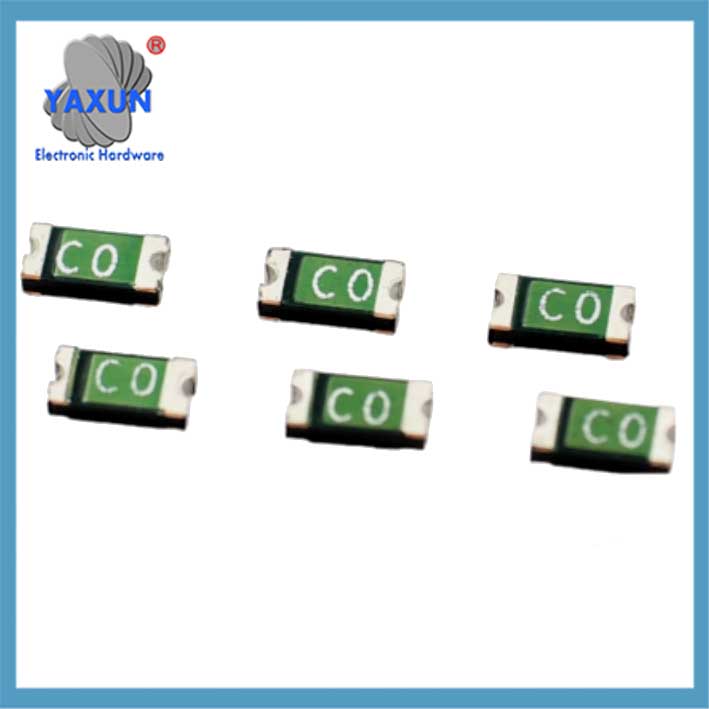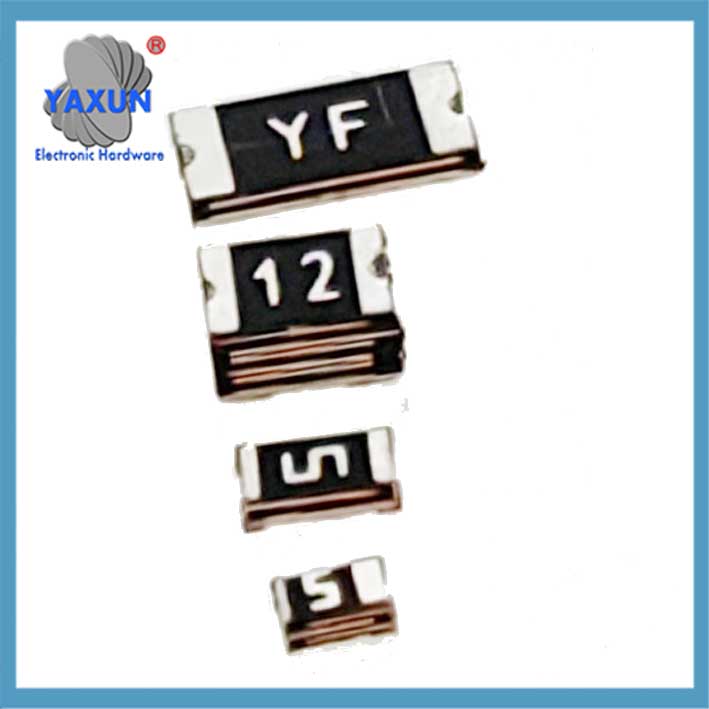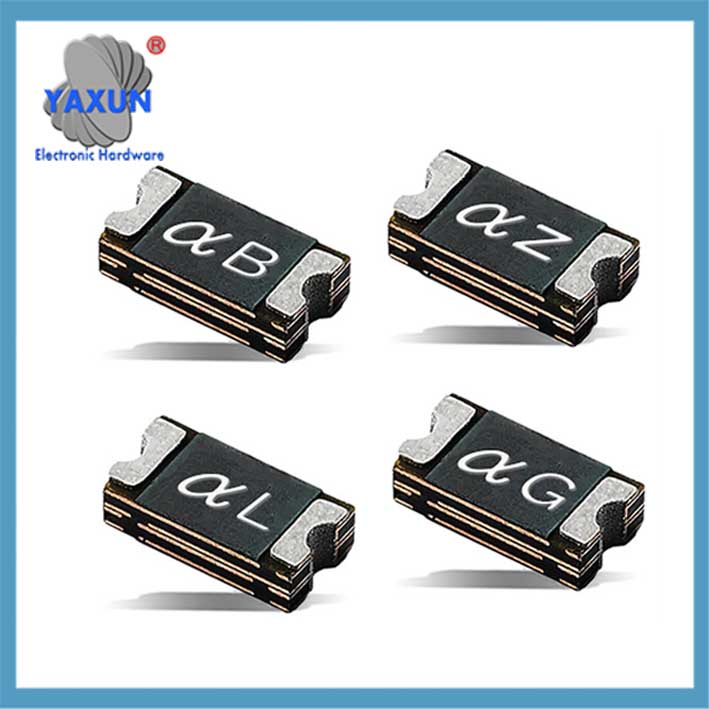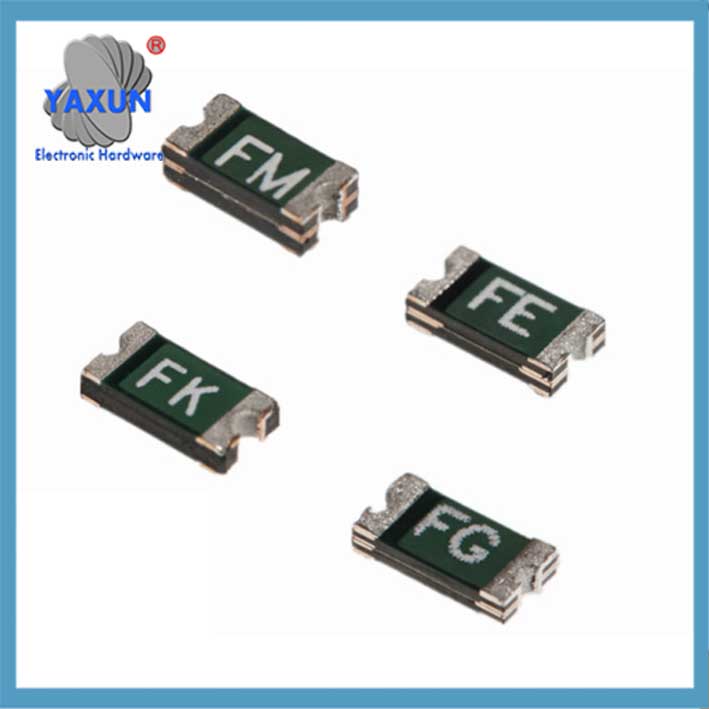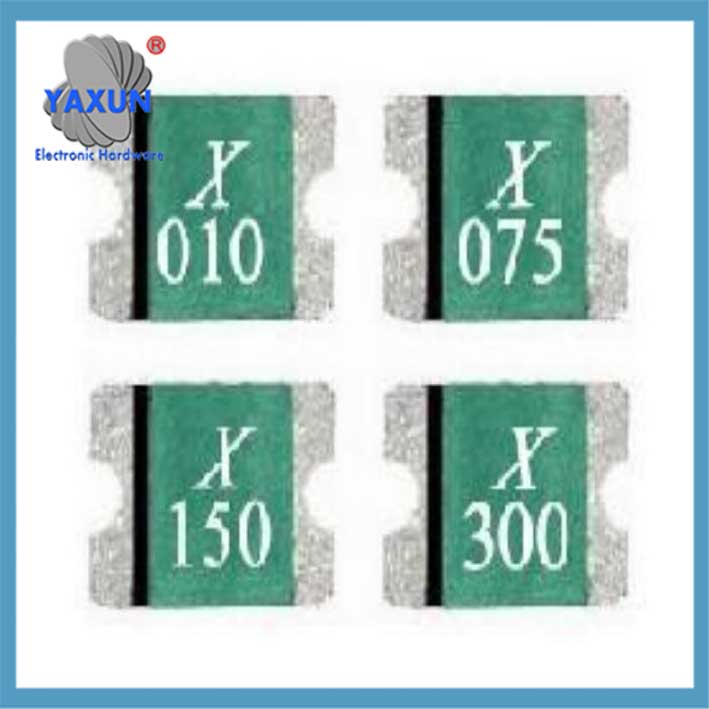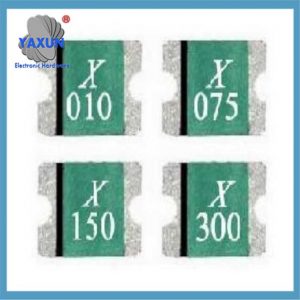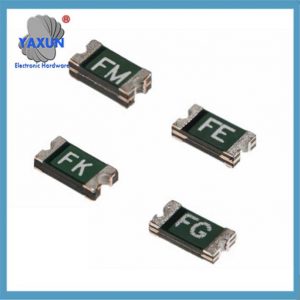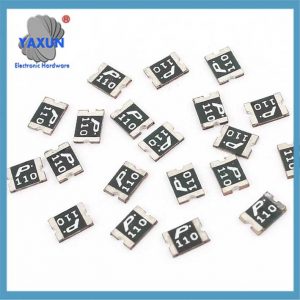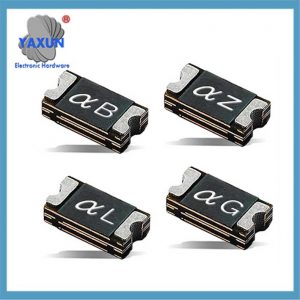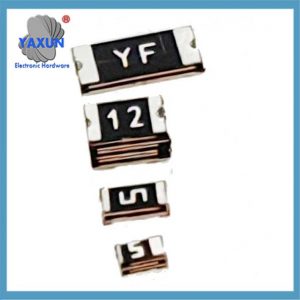Product Categories
Product Tags
Functions and Applications of Resettable Chip Fuses
Resettable chip fuses, also known as PTC (Positive Temperature Coefficient) resettable fuses or PPTC (Polymeric Positive Temperature Coefficient) devices, are circuit protection components that automatically reset after a fault condition is cleared. They protect against overcurrent and over-temperature situations, offering a self-resetting solution that enhances reliability and reduces downtime in various applications.
Resettable chip fuses (PPTC) are overcurrent protection components based on the positive temperature coefficient characteristics of polymers. They have an automatic reset function and are widely used in circuit protection of electronic equipment. The following are its core points:
1. Structure and working principle
Material composition
It is composed of specially treated polymer resins (such as PE polymers) and conductive particles (carbon black or metal particles). Under normal conditions, the conductive particles form a low-resistance path (0.1-several ohms). Protection mechanism
When overcurrent occurs, the thermal effect of the current causes the resin to melt and expand, the conductive network to break, and the resistance suddenly increases to a high-resistance state (up to megohms), limiting the current to microamperes. After the fault is resolved, the conductive particles cool and shrink, reconnect, and restore the low-resistance state without manual replacement.
Overcurrent Protection:
Resettable fuses limit excessive current flow in a circuit, preventing damage to sensitive components during short circuits or overload conditions.
Over-temperature Protection:
They can also sense and respond to excessive temperatures, tripping to a high-resistance state to prevent overheating and potential damage.
Self-Resetting:
Unlike traditional fuses, resettable fuses automatically return to their low-resistance state once the fault condition is removed and the temperature or current drops below the trigger point.
2. Key parameters and characteristics
| Parameters | Description |
|---|---|
| Holding current | Maximum current to maintain non-action (e.g. 0.05-3A for 0805 package) |
| Action current | Minimum steady-state current to trigger protection (usually 2 times the holding current) |
| Withstand voltage | Typical value 16-60V, the withstand voltage value will decrease at high temperature |
| Response time | Overload can be triggered in milliseconds, which is related to the current overload multiple |
3. Typical application scenarios
Consumer Electronics:
Widely used in smartphones, laptops, TVs, and other electronic devices to protect against overcurrents and over-temperature issues.
Power Supplies:
Provide reliable protection for power supplies in various devices and systems, preventing damage from short circuits or excessive current draw.
Automotive Electronics:
Used in cars for protecting dashboard electronics, control modules, and entertainment systems from overcurrents.
Telecommunications:
Protects routers, switches, and other communication devices from damage caused by overcurrents, ensuring uninterrupted connectivity.
Industrial Control Systems:
Safeguard electronic control panels, PLCs (Programmable Logic Controllers), and other critical components in industrial settings.
Aerospace and Nuclear Applications:
Provide reliable protection in environments where fuse replacement is difficult or impractical.
Medical Devices:
Can be found in some medical devices, ensuring the safety and reliability of critical medical equipment.
Audio Systems:
Protects loudspeakers, especially tweeters, from damage due to overdriving.
4. Selection considerations
Current matching: The maintenance current should be 1.25 times higher than the maximum operating current of the circuit;
Package selection: Select 0402/0603 and other sizes according to the PCB space, and 1812/2920 packaging is required for high current scenarios;
Environmental adaptability: The current usage needs to be reduced in high temperature environments to avoid false triggering.
5. Technology development trends
Material optimization: New nano-composite materials improve response speed and pressure resistance.
Structural innovation: For example, YAXUN Electronics’ adjustable patch components are suitable for different circuit layouts.
If you need a test standard, you can refer to the 25°C environment to verify the maintenance current (no action for 15 minutes) and action current (trigger within 5 minutes) and other indicators.
Advantages over traditional fuses:
Self-Resetting:
Eliminates the need for manual fuse replacement, reducing downtime and maintenance costs.
Compact Size:
Resettable fuses are often smaller than traditional fuses, making them easier to integrate into compact electronic devices.
Longer Lifespan:
Capable of withstanding numerous overcurrent events, leading to a longer overall lifespan compared to traditional fuses.
No Arcing:
Resettable fuses do not produce sparks or arcing during a fault, enhancing safety.
Contact Us
Waiting for your email, we will reply you within 12 hours with valuable information you needed.
 English
English Afrikaans
Afrikaans العربية
العربية বাংলা
বাংলা bosanski jezik
bosanski jezik Български
Български Català
Català 粤语
粤语 中文(简体)
中文(简体) 中文(漢字)
中文(漢字) Hrvatski
Hrvatski Čeština
Čeština Nederlands
Nederlands Eesti keel
Eesti keel Suomi
Suomi Français
Français Deutsch
Deutsch Ελληνικά
Ελληνικά हिन्दी; हिंदी
हिन्दी; हिंदी Magyar
Magyar Bahasa Indonesia
Bahasa Indonesia Italiano
Italiano 日本語
日本語 한국어
한국어 Latviešu valoda
Latviešu valoda Lietuvių kalba
Lietuvių kalba македонски јазик
македонски јазик Bahasa Melayu
Bahasa Melayu Norsk
Norsk پارسی
پارسی Polski
Polski Português
Português Română
Română Русский
Русский Cрпски језик
Cрпски језик Slovenčina
Slovenčina Slovenščina
Slovenščina Español
Español Svenska
Svenska ภาษาไทย
ภาษาไทย Türkçe
Türkçe Українська
Українська اردو
اردو Tiếng Việt
Tiếng Việt
